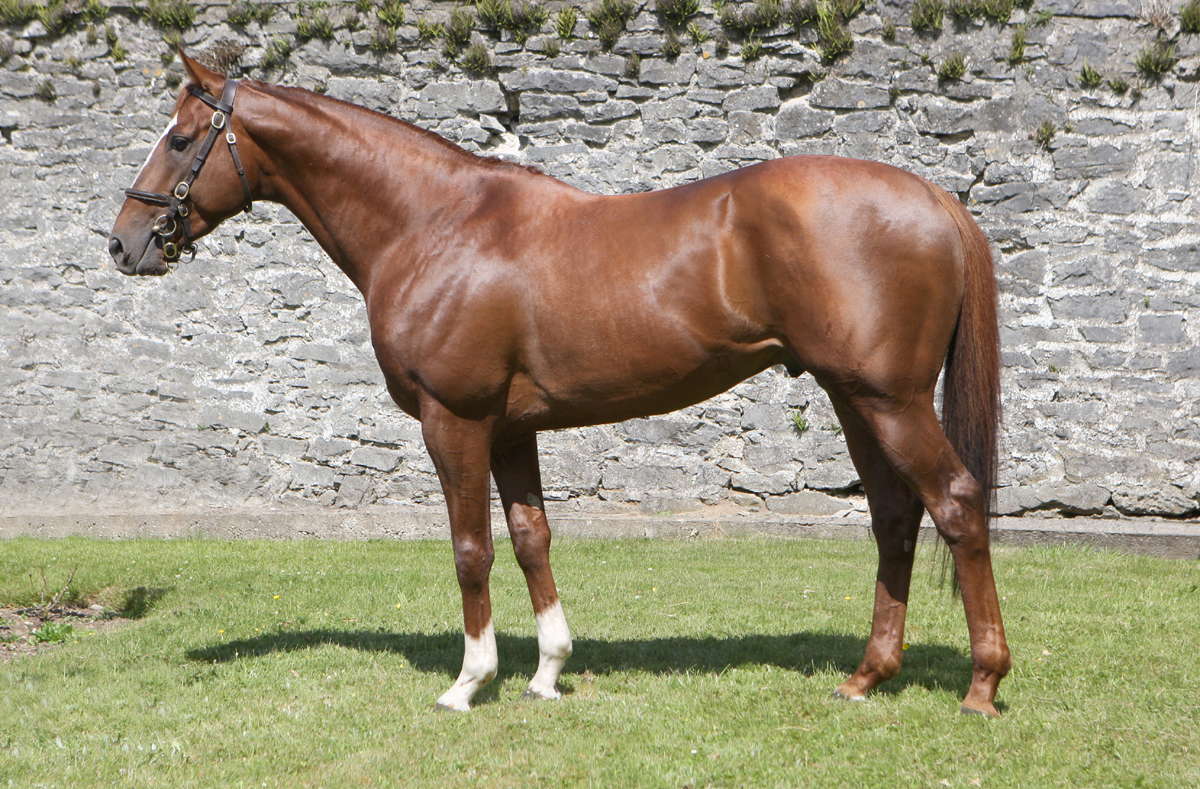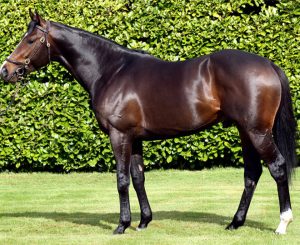Only £25,000 separated the top three, Dubawi, Lope De Vega and Kingman, at the head of the leading European sires’ list heading into the weekend. The common denominator among the protagonists was Classic success and in the case of the leader Dubawi, not one but two Classic winners.
Dubawi finally broke his Epsom duck on Friday thanks to Ezeliya’s success in the Oaks to complement Notable Speech’s earlier win in the 2,000 Guineas. For good measure, he also sired the second home, Dance Sequence.
Ezeliya’s female pedigree is the work of just a handful of breeders across 11 generations spanning over 100 years
Ezeliya’s victory brought the current Aga Khan family tantalisingly close to the 100 Group 1 winner mark, being their 99th, and like so many of their horses is the result of decades of cultivation, in her case stemming from the acquisition of the Marcel Boussac stock in the late 1970’s. The line goes back to Frizette, one of the most influential mares in the history of the breed who ended her days under Boussac’s ownership, via the owner’s important mare Tourzima (who was actually inbred 4×4 to Frizette via the full sisters Durban and Heldifann). Allowing for the fact that Heldifann was the product of Haras du Gazon, owned by Mrs. Herman Duryea, Ezeliya’s female pedigree is the work of just a handful of breeders across 11 generations spanning over 100 years. Very rarely can that be said today.
Similarly, the Aga Khan’s Poule d’Essai des Pouliches winner Rouhiya also has her roots in old Boussac stock. Her Classic victory arrived during a particularly productive patch for Lope De Vega, who had been represented just hours before in the US by the easy Grade 2 Man O’War Stakes winner Silver Knott. Only a week earlier, another son Program Trading had also struck in the Turf Classic Stakes at Churchill Downs to bag his third victory at Grade 1 level.

Lope De Vega: currently Europe’s leading sire by prize-money. Photo – Ballylinch Stud/Peter Mooney
While Silver Knott and Program Trading are older horses, Rouhiya belongs to Lope De Vega’s first six-figure crop, bred in the year that Ballylinch Stud pushed his fee from €80,000 to €100,000. Lope De Vega’s rise to six-figure territory arrived off the back of an impressive early body of work underpinned by a first crop of 16 stakes winners headlined by the top two-year-old and miler Belardo. Other stars such as Phoenix Of Spain and Newspaperofrecord followed not long after.
Today, the son of Shamardal is well regarded as one of Europe’s elite stallions at a fee of €125,000. There are 111 black-type winners, good for a stakes winners to foals of racing age strike-rate of eight per cent, and 21 at Group/Grade 1 level. It’s a total that is currently being enhanced to good effect by that first €100,000 crop, which not only includes Rouhiya but Look De Vega, who emulated both his sire and grandsire Shamardal, with victory in Sunday’s Prix du Jockey Club at Chantilly. Not only that, another son of Lope De Vega, First Look, ran second.
That’s to go with the recent success of Almaqam in the Heron Stakes at Sandown on the same card that another representative, the older Royal Rhyme, took the Brigadier Gerard Stakes.
The Wertheimer-homebred Halfday is also one of the leading fancies for the Prix de Diane following her wide-margin win in the Prix Cleopatre at Saint-Cloud.
As a result, Lope De Vega has turned what looked a competitive European sires’ title on its head. His runners have now earned just over £2.65 million so far this year, allowing him a lead of around £900,000 over Dubawi. The season obviously still has a long way to run but as we have seen, the Ballylinch stallion has plenty of ammunition to work with, enough to give him every opportunity of holding his place.
Look De Vega was bred by Haras de la Morsangliere and Ecurie des Charmes, who race him in partnership with Patrick Mandar and his trainers Carlos and Yann Lerner. Haras de la Morsangliere is well known in the showjumping world but a relative newcomer to horseracing, its first purchase coming in 2013 when the stud’s Joelle Mestrallet paid €85,000 through Meridian International for Look De Vega’s dam Lucelle at the Arqana August Sale.

Look De Vega pictured as a yearling. Photo – Arqana
Lucelle, a daughter of High Chaparral, won three times for Jean-Claude Rouget over 1m2f and 1m4f and was already proven as an useful producer at Morsangliere prior to Look De Vega. Each of her first three foals are winners and include the useful Julie Camacho-trained handicapper Titian and Alma Bella, a winner earlier this year at Deauville. Look De Vega, her fourth foal, is by far her best runner and is followed by a two-year-old Almanzor colt.
The Prix du Jockey Club was undoubtedly a result that the much-missed Lady O’Reilly, who died last August, would have taken great pride in. O’Reilly bred Lucelle out of her Lighted Glory family, which had already thrown one Jockey Club winner in the 2007 scorer Lawman as well as a Prix de Diane heroine in Latice. Both were bred by O’Reilly’s Petra Bloodstock Agency out of Laramie, a daughter of Gulch who features as the granddam of Lucelle.
Lucelle was the product of four generations of O’Reilly breeding
Lucelle was the product of four generations of O’Reilly breeding, enough to fill her entire catalogue page when she came up for sale through her breeder’s Haras de la Louviere as a yearling in 2013.
Her fourth dam, Lighted Glory, had been purchased by O’Reilly’s uncle Constantin Goulandris as a foal from Claiborne Farm and sent to race in France, latterly with Francois Mathet, proved the worth of that investment by winning the 1975 Prix de Flore and running second to Nobiliary in the Prix Saint-Alary. She was also a close fifth in that year’s 1,000 Guineas at Newmarket.
It’s easy to see how Lighted Glory would have appealed in the first place to such an owner-breeder. Firstly, she was from the first crop of Nijinsky, who had captured the imagination with his Triple Crown sweep of 1970, and out of Lighted Lamp, a Sir Gaylord half-sister to the 1962 champion two-year-old winner Crocket, whose seven wins included the Middle Park and St James’s Palace Stakes. And it wouldn’t have been lost on those involved that the foundation to her family lay in Jim Joel’s exceptional mare Picture Play, the winner of a war-time 1,000 Guineas at Newmarket.

Humorist as depicted by Sir Alfred Munnings. The extended reaches of Look De Vega’s family contain Jack Joel’s ill-fated Derby winner
Picture Play’s great-granddam, Absurdity, had played a pivotal role in the racing fortunes of his father, Jack Joel, as the dam of his 1913 1,000 Guineas and Oaks heroine Jest, herself dam of his short-lived 1921 Derby winner Humorist. It was that same family which came to gift the younger Joel with a number of his most memorable results.
When Joel inherited Childwickbury Stud upon the death of his father in 1940, he also came into ownership of Absurdity’s Phalaris granddaughter Amuse, then in foal to Donatello. The resulting filly was Picture Play.
Picture Play foaled seven winners, several of them high-class including the link in this instance, Falmouth Stakes winner Queen Of Light. Through her Nassau Stakes-winning daughter Crystal Palace, Queen Of Light became the granddam of Joel’s 1967 2,000 Guineas and Derby winner Royal Palace and third dam of his 1981 1,000 Guineas heroine Fairy Footsteps. In time, the Crystal Palace line would take on a life of its own thanks to a host of classy representatives, among them Tante Rose, Danon Premium and Crystal Music.
Of Queen Of Light’s other daughters, Hungerford Stakes winner Picture Light foaled the dual Lockinge Stakes winner Welsh Pageant while Lovely Light produced Cumberland Lodge Stakes winner Main Reef and Musidora Stakes winner Moonlight Night, herself the ancestress of Godolphin’s Group 1 winners Doyen and Moonshell.
Lighted Lamp was out of Queen Of Light’s minor-winning daughter Chandelier, a 1955-foaled filly by Goyama. Another branch of the Chandelier line threw top American turf colt Greinton but it is Lighted Lamp’s daughters that has arguably done most to keep this line relevant, not just through Lighted Glory but the Petingo mare Foudre, who became the ancestress of that smart sprinter Paris House and champion Cape Blanco.
As most likely anticipated, Lighted Lamp became an important mare for O’Reilly. Francois Boutin saddled her Artaius daughter Liastra to win the 1986 Prix Fille de l’Air at Saint-Cloud and two years later her Shirley Heights filly Light The Lights to win the Prix de Pomone for the breeder. Prior to that performance, Light The Lights had run fifth to Resless Kara in the Prix de Diane and would later run third in the Prix Vermeille. She was deemed good enough to take her chance in that year’s Arc and although well beaten, wasn’t disgraced in ninth behind Tony Bin in a 24-runner field.
Laramie was retained for breeding within the Petra band and went on to become one of those rare multiple Classic producers as the dam of Lawman and Latice
Despite her talent, Light The Lights foaled just two winners. Her Gulch daughter Laramie was not one of them but retained for breeding within the Petra band, went on to become one of those rare multiple Classic producers as the dam of Lawman and Latice, winners of the 2007 Prix du Jockey Club and 2004 Prix de Diane. Neither were the products of expensive covers; Latice was produced when her sire Inchinor stood for £6,000 while Lawman was a highlight of Invincible Spirit’s first cheaply-bred crop. Lawman has since had a productive stud career in Ireland and France – to date, he is the sire of six Group 1 winners – while Latice foaled the Listed-winning and Group 1-placed Fencing for George Strawbridge.

Lawman: relation to Look De Vega also won the Prix du Jockey Club. Photo – Ballylinch Stud
Lucelle is out of Laramie’s daughter Larceny, an unplaced Cape Cross mare whose later foals included The Black Princess, winner of the Lancashire Oaks for John Gosden.
Much of the weekend’s attention was garnered by City Of Troy, and rightly so. But Look De Vega’s achievement of winning the Prix du Jockey Club on only his third start shouldn’t be underestimated, especially with it having been executed in such authoritative fashion.
Looking towards the future, it won’t be lost on stud masters that several of Lope De Vega’s early sire sons are holding their own at stud. They include Phoenix Of Spain, who continues to quietly impress at the Irish National Stud, notably as the sire of the admirable Classic-placed colt Haatem out of his first crop.
Meanwhile, Lope De Vega is also forging a burgeoning record as an effective broodmare sire, his group of 15 stakes winners in that department led by the recent Prix Saint-Alary heroine Birthe and Cheshire Oaks scorer Forest Fairy.



